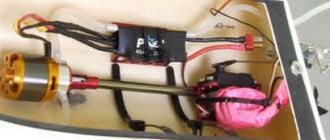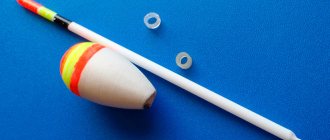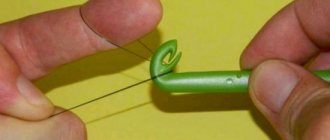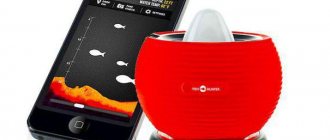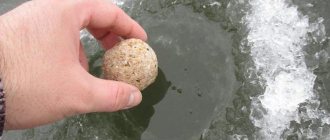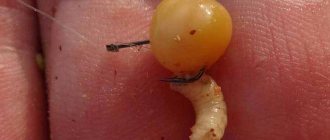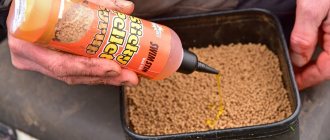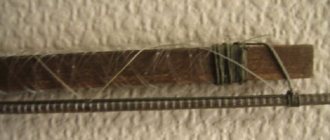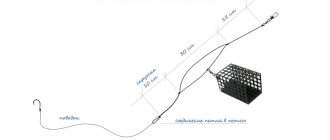Among the many ways of catching fish, fishing on a boat is particularly unique and individual in the installation of a set of equipment assembled for fishing. The bait boat, so as not to initially mislead the reader, has absolutely nothing to do with this type of hunting and even in design terms is strikingly different from the device used for fishing.
Modern fishing boats are followers and improved models of equipment that has long been used by fishermen on large rivers. Only these fishing elements looked quite primitive and were an ordinary log modified for fastening a cord, the course of which could be adjusted from the shore, releasing the equipment over a long distance. Carried away by the force of the river current, the piece of wood pulled the thread with bait, thereby attracting cautious fish far from the shore, and made the fishing itself more successful in terms of the quantitative catch.
The bait boat has a mechanical drive, powered by batteries, and serves only to accurately supply food to the fishing zones, not being a direct element of the fishing equipment, which is what a fisherman who is not familiar with the technology of a fishing boat needs to understand.
Important! The method itself is suitable for long-distance fishing in vast water areas with currents or in windy weather, without the use of a swimming device and the need to cast bait.
These parameters allow you to catch cautious fish that stay far from the shore and feed in the upper layers of the water. The trophies of the boat's tackle are mostly chub, ide, bleak and grayling. Under certain conditions you can catch pike, pike perch, trout and salmon. The presented article will tell the fisherman about this ancient, but fascinating and prey method of hunting with a bias towards the presentation of already modernized, modern equipment, methods of its production, the process of fishing itself and the differences between bait boats for fishing and its fishing options.
Places of application
A fishing boat requires a certain specific reservoir where this fishing device can work effectively. If the depth of the reservoirs does not particularly affect the fishing technique, then the strength of the current, the wind speed, the size of the reservoir and the intensity of its overgrowth with aquatic plants create significant both positive and negative conditions for successful fishing.
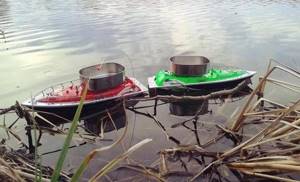
Important! First of all, it is worth noting that fishing with a boat is a priority for large rivers, flowing lakes and reservoirs with the presence of traction. On the presented types of reservoirs, fishing can be carried out, regardless of weather conditions, throughout the open water season. In stagnant bodies of water with vast water areas, fishing is possible only with the presence of wind and waves, the energy of which is the propellant of the device.
Due to its principle of operation, the bait boat is not limited in any way by these conditions. The intensity of the thickets on the surface of the reservoir and in the horizons of its upper layers creates difficulties for fishing, interfering with the passage of the device. Bottom vegetation, reaching to the average water horizon of 1.5-2 meters, does not affect the quality of hunting and rather contributes to more successful fishing sessions using the presented set of equipment. Important circumstances for using boat fishing are fishing places under trees and bushes overhanging the water, where there is no way to deliver bait using the ordinary method of supply, spinning casting and bottom mounting.
Fishing on a boat: the secret of catchability, principle of operation and how to do it
The old-fashioned method of fishing on a boat has been known for a long time. Whatever tricks the fishermen go to, whatever they come up with, our jacks-of-all-trades have more than enough imagination.
Monuments can be erected to our fathers and grandfathers, for their simple and not so simple equipment.
Nowadays there are a lot of all kinds of fishing miracle gadgets in stores, but before you had to be content with what you had. Well, rely on yourself, that is, on your own head, hands and mind.
Operating principle of a fishing boat
The operating principle of a fishing boat is based on the resistance of the working planes of the product to the forces of the current of the reservoir. The very forces of the flow of a reservoir can be caused both by the direct flow of water as a result of the natural slope of the river bed to lower elevations of the earth, and by the creation of surface movement of water masses through wind load. The force of the current presses on the surface of the device. The product held by the cord is subject to the action of two multidirectional forces, the difference between which creates the direction of movement. If the force of the current is beyond the fisherman’s control, then by manipulating the magnitude of the holding force of the fishing tool, it is possible to reduce or increase the difference between the two driving components of the effort, thereby causing a general controlled movement of the boat’s hull along the desired trajectory.
It is the adjustable stroke that provides the required conditions for fishing, delivering bait to the necessary and promising places for fishing in the reservoir, in combination with the range of coverage of the water area. The design of the boat is designed to attach a cord, which performs a dual function. At the same time, it is designed to adjust and correct the stroke and directly represents a fishing tool, equipped with leashes with hooks and bait.
Bringing the structure onto the required trajectory, the fishing tackle is held and waiting for the fish to bite, after which the equipment is pulled back to the shore, removing the trophy and re-equipping the hooks with fresh bait, sending it off for the next working move. The principle of fishing is similar to the principle of fishing with peret tackle, only instead of a partner on the other side of the reservoir there is a so-called water kite, directly installed on the surface of the water.
What kind of fish can you catch on a boat?
A boat approach for catching a variety of fish: pike, chub, asp, trout, bream, ide, perch and others.
- Pike does not react well to bait and is best caught on riffles with a grassy water surface. Its bite is not so easy to notice, since the bait suddenly disappears, and the fishing line sags as if the hook was caught on a stump. The pike does not create much resistance when hooking, so it goes to the shore quite calmly.
- The chub very carefully grabs the fly , but at the same time he is in constant interest in it. The fish loves to play with the bait, so you can see splashes under the insect, but there will be no bite. If a chub gets hooked, then the fish are first felt, and only then a splash is visible. The fish loves to resist, but it is enough for him to lie on his side and he stops any attempts to escape. Rarely gets off the hook.
- The ide takes the fly quite often. To catch it, you need to put a lot of effort into hooking it. This fish requires a very strong and sharp hook. This may be due to the fact that the fish takes the fly into its mouth, but the hook does not stick anywhere, but lies in its mouth. Ide is considered not a very successful trophy for this type of fishing. He resists almost the entire time until he gets to the shore.
- Perch often rarely catch a boat. In addition, large fish are considered a fairly rare catch. But at the same time he excitedly grabs the bait.
- On warm days, the asp rises to the surface of the water. It grabs the bait quite greedily with a very sharp jerk. The bite is characterized by a strong splash under the insect and a powerful jerk. The fishing line sags in the place where the leash is attached and you can see what kind of bait the asp was caught with. Creates virtually no resistance. He doesn't get off the hook unless he starts making mistakes while surviving.
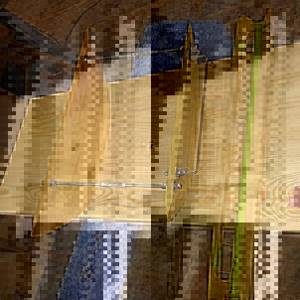
How to make a fishing boat
Perhaps, to those unfamiliar with the fishing tool presented above, it will seem that its design is complex and causes a lot of technical problems that need to be solved in the manufacture of the product, but in fact, the water snake is quite simple to assemble. A bait boat will require much more knowledge and resources for its installation.
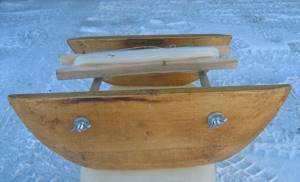
If you have the material for the work and the electrical tools needed to perform the operations, installation of the structure, taking into account painting and drying of the surfaces, will take about one day. In addition, the fisherman will have to take care of purchasing the main fishing line, preferably in a braided version starting from a diameter of 0.5 mm and a length of up to 300 meters. Preparation of monofilament leashes of 0.15-0.2 mm, lengths from 0.5 meters, which are equipped with hooks selected based on the type of bait used for fishing. It is comfortable to hold the assembled structure and control its progress using a powerful feeder rod 3-3.5 meters long, with tests starting from 200 grams in a combined action. It is more convenient and rational to equip such a fishing rod with an inertial reel like the Nevskaya, where there is plenty of line laying and reliability under overloads does not raise fears about the failure of the mechanism.
Next, we’ll talk directly about material preparations, the choice of tools and methods of carrying out installation and assembly work, presenting a detailed guide to making a fishing boat. An important point for the fisherman is the fact that the fishing equipment described in the article cannot be found in the form of a factory product. Manufacturers, due to the low demand for this specific product, are not involved in the production and sale of gear anywhere, and only a boat for delivering bait is available to the fisherman in the retail chain.
What is a fishing boat?
In appearance, the boat resembles a sleigh or a small boat. Wood, polystyrene foam, plywood, and plastic bottles are suitable for its manufacture. If you use wooden planks, it is better to take hardwood, such as oak or beech.
The design is represented by two planks, one of which should be 15-40 mm smaller than the main one, connected by two metal rods. In the construction, the planks must be parallel. Holes are made in the smaller board for attaching fishing line. The leashes are attached to the fishing line in such a way that the first one near the boat is short, and each subsequent one is longer than the previous one.
Carrying out preparatory work
To make a hunting kit, you need to stock up on wood in the form of a linden or alder board 12 mm thick and no more than 20 cm wide.
Important! Ordinary and common lining made from these types of wood is suitable for finishing.
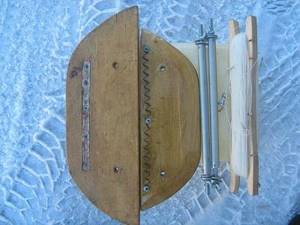
This material will form the basis of the working fluid of the structure. To connect the elements and fasten the cord, purchase a metal pin with a diameter of 6 mm, complete with hardware in the form of washers and nuts corresponding to the thread pitch and diameter of the pin used. To load the wooden base of the catamaran, in particular its keel part, weights in the form of lead plates are used, which are attached to the workpieces with self-tapping screws. To process parts of a product from wooden blanks, you will need to purchase products that prevent moisture absorption. The most famous component is ordinary drying oil. The drying oil will also serve as the basis for further painting the catamaran with oil paint.
Important! The paint is white, which is used to paint the boat above the waterline, and blue, for painting the lower, underwater part of the catamaran, which makes the fishing tool less noticeable to fish in the water.
Drawings developed in advance will simplify installation and assembly work. A boat for delivering bait with your own hands, unlike a fishing catamaran, will require the purchase of an electric mechanism, which, together with the blade, will act as the engine of an auxiliary boat, which greatly increases the cost of the homemade product.
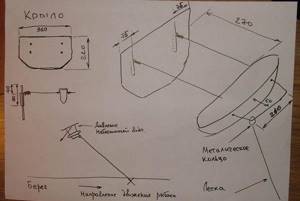
A useful tool is a jigsaw for cutting wooden surfaces according to templates. A small cutting machine for rounding shapes and sanding wood, as well as cutting and trimming metal studs. A screwdriver is used for drilling holes and tightening screws when securing loads. Metal drills are selected based on the diameter of the metal pin used, in our case 6 mm. Open-end wrenches for tightening nuts and fastening hooks are selected according to the size of the nut used. A tape measure and a drawing tool are prepared for carrying out work on marking the material.
Manufacturing
Despite the fact that factory models are already appearing on sale, most fishermen make a fishing boat with their own hands. We will describe the manufacture of the simplest model, in our opinion, the materials for which can be easily purchased in the retail chain.
We will describe a model with average parameters; for fishing in other conditions, the characteristics will need to be changed or additional planes made. The requirements for them were described in the “Design” chapter.
We start making the boat by cutting out the planes. For the sides we use wooden boards, preferably made of hardwood, with a thickness of 12 to 22 millimeters. We draw drawings of the blanks on the board and cut them out along the contour with a jigsaw.
They are trapezoidal in shape with the following dimensions:
- The large distant plane, also called the leading one, has a height of 120 millimeters, and the bases are 350 and 230 long.
- The small near trapezoid, or supporting one, is made with a height of 90 millimeters, with base lengths of 300 and 220.
Simple manufacturing method
You need to make a boat for fishing in the likeness of a catamaran with cans of excellent size. Wooden blanks are marked according to trapezoidal templates. To compare the dimensions of a medium-sized boat, let’s start from the size of the larger can (the first length, the second width) 350x120 mm, and the smaller one 300x90 mm. The sharper the angle of the part, the steeper and faster the speed of the structure increases, but its control parameters deteriorate. After cutting the workpieces with a jigsaw, the sharp corners are smoothed to smooth shapes, and the side surfaces and ends are polished, which will give the catamaran greater streamlining.

The polished parts are marked for installation of transverse fasteners, the length of which varies between 13–18 centimeters, and holes are drilled. A small can has a hole for a fastening hook in the center of the outer surface. In this form, the pieces of wood are treated with an impregnating composition and, after drying, they are painted using the method described above in two different colors. Metal studs are cut to a certain size for the width of the boat and their ends are trimmed to allow the workpieces to be screwed together. The painted wooden parts are connected along the drilled holes by tightening the studs, without fail installing spacer washers on the studs before tightening, to prevent damage and crushing of the wood.
Important! To prevent the connection from unwinding, nuts are placed from the inside and outside, and the screwing must be additionally tightened.
A hook is installed in the fastening hole, which is made from a pin and a pair of clamping nuts. To ensure the stability of the catamaran, increase its submerged mass, and therefore increase the parameters that contribute to the quality of control, the keel of the larger can is loaded with a lead plate. The plate is cut to the shape of a wooden blank and mounted, pressing it to the surface with self-tapping screws. To achieve stability, in some cases they resort to loading a small can, carrying out an operation similar to the one described above. Upon completion of loading, the do-it-yourself fishing boat is basically ready. Now all that remains is to test and adjust the stroke by adjusting the load and the fastening element.
Important! On a pond, adjustments are made on a cord similar to what will be used for fishing, performing all the adjustment operations.
Having achieved the required result of the vessel’s hull settling into the water and ease of control of the progress, the product is equipped with elements of a fishing rig and full-fledged fishing begins. Testing a bait boat with your own hands will require debugging the running mechanism at speed, practically determining the amount of idle speed when braking at different speeds, and checking the operation of the mixture release, which can be imitated by ordinary river sand.
Boat equipment
The component of the boat includes a fairly small number of devices, the main ones of which are:
- First of all, the design of the boat itself, which can be made of any non-sinking materials: foam plastic, wood, etc.
- A piece of fishing line that runs from the structure to the leash. You should always have a couple of spare pieces in stock. Also, the main fishing line of the tackle is 0.4 mm in size.
- Several leashes, which are made from the main fishing line, two or three of them are needed.
- It is better to take a fishing rod in the form of a spinning rod, the length of which should not exceed 3.5 meters.
- The reel comes with a reverse lock feature.
- Hooks are taken with two hooks, sometimes with three hooks.
An improved method for making a reversible boat
Fishermen who use a water kite in practice to catch fish have noticed the inconveniences associated with returning or, more correctly, catching the trophy using gear. Pulling up required some effort and constant control of the tension of the cord with instantaneous reeling, which clearly did not provide comfortable fishing. These inconveniences are especially noticeable when hunting at long distances, 100 meters or more, on rivers with moderate currents and at rapids, where the water jets are even stronger.

The inquisitive mind and ingenuity of the fisherman gave rise to the construction of reversible boats, which, with certain manipulations with the controls, change the trajectory of movement to the opposite one. Thus, bringing the cord to the shore, by influencing the direction of movement of the boat by the same water flow, but without the discomfort of winding up the cord in an emergency mode with uncontrolled fishing for the trophy. The possibility of reverse is provided by the additional placement of a metal bracket with a ring, which is attached to the outside of the small can of the swimming device. Unlike the simple method of regulating the stroke, where the thread is fastened to a stationary hook, in the reverse version the cord is knitted to a movable ring.
At the moment the boat is launched at a distance, the tension ring takes a certain position, moving the product away from the shore. If, after catching a fish or checking the bait, the cord is given slack and then sharply pulled, the position of the ring spontaneously shifts to the opposite part of the bracket. After changing the position of the fasteners, the trajectory of movement also changes, returning the vessel in the opposite direction. The bracket is the most primitive way of organizing reverse movement. Fishermen have also developed more complex mechanisms for changing trajectories, which are based on the forces of displacement of attachment points and require additional materials, tools and sketches for production, which is already within the power of experienced mechanics and mechanics.
Guide to making a fishing boat
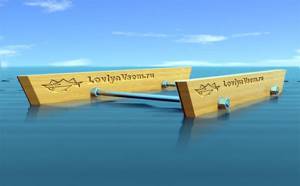
Today we’ll talk about such equipment as a fishing boat. Not the one that carp anglers use to bring in bait, but the gear that was used by our ancestors for long-distance fishing before the invention of spinning and fly fishing.
The boat, or sleigh, works on the same principle as the water kite. Due to the peculiarities of the shape and fastening of the cord, under the influence of current or wind, it is able to move away from the shore a considerable distance. The use of reverse in the latest models allows you to change the direction of movement of the water glider to the opposite.
Boat fishing technique
Fishing on a boat begins with launching the device into the water and its subsequent bringing it to the hunting distance. Regardless of the fishing conditions, the launch technique is absolutely identical. The equipment is placed on the water along the flow of water and begins to move independently. At this time, the fisherman unwinds the thread and places it on the shore, without interfering with the progress of the boat.
Important! The main point of the launch is the supply of leashes with bait to the water. It is necessary to ensure that the fishing line leashes go into the water without overlapping or tangling with the main thread.
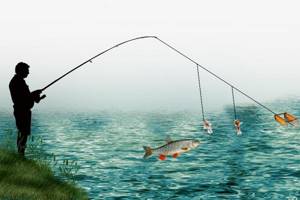
The force of the current immediately picks up the bait and, already in a working, deployed state, the tackle moves to the required holding point with the possibility of fish biting. Having reached the destination, the cord is pulled and a bite is expected, which is noticeably transmitted to the tip of the rod, expressed by a small twitch or when fishing at short distances, noticeable by white snowstorms on the surface of the water in the area where the leashes are located. There is no hooking in the fishing technique, since the trophy is self-hooked and fished up to the first leash by winding the thread onto the rod's reel, and the rest of the tackle is taken out of the water by hand. We will talk in more detail about some features of hunting tactics, depending on the conditions on the reservoir, in the continuation of the material.
Fishing on moderate rivers
Such rivers are fished along the flow in places with bushes and trees hanging over the water. The trophy for the most part becomes ide and chub standing near the shore. The baits are floated freely, with alternations of tapping the bait on the water as a result of cyclical holding of the gear. The leashes are placed 2 meters long, equipped with small numbers of doubles with a grasshopper, dragonfly or chafer. The bites are sharp, almost never empty.
Using a boat on wide rapids
Rapids are fished in places where it is difficult to go far into the water to accurately deliver bait to certain promising fishing spots. This method is great for hunting grayling. Artificial fly fishing flies are used as bait, which are tossed in the water column with intense and short movements of the spinning rod. The boat is equipped with three leashes without guards up to 3 meters long.
Fishing on slow-flowing rivers
A bait boat in such conditions would have greater efficiency in delivering food due to its high-speed qualities, but our gear takes a long time to install in a slow current, but can successfully raise a large predator standing in the thickets at the bottom of the reservoir to bite. Live bait is released over the underwater grass on meter-long leashes, alternating free movement with holds, during which the fry can even enter the thicket zone. The bite is felt as a strong blow with the predator immediately moving away from the point of attack. The moment the thread departs from the trajectory requires the start of fishing for the trophy.
How to catch grayling in weak currents and still water
When using this method, the boat is launched from the shore below the place where fishing is supposed to be done, and, moving along the shore, the cord gradually unwinds. The ship moves away to the required distance. It should be understood that in this case it will be impossible to stand still, because... the fishing line will definitely sag, and the boat will be brought to the shore.
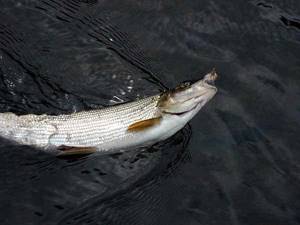
Fishing for grayling in this way requires almost continuous movement along the shore
— Small grayling (up to 15 cm) often attacks the bait “in flight.” You can often see how he misses when jumping out of the water; “ The big one, on the contrary, grabs the bait right from the water, swallowing it deeply, so it’s quite possible to miss the moment of the bite, learning about it only after the fishing line suddenly tightens. In this case, you need to make a sharp cut using a reel to the side or up, and then begin the pulling process. This should be done slowly, trying to raise the fish's head above the surface. This does not always work out, because... The boat is a rather inertial tackle, and part of the energy is transferred to the boat itself. The connection with the fish is not as tight as, for example, when fishing with a spinning rod. When pulling out fish, you need to pay attention to the correct placement of the fishing line on the shore in order to avoid its subsequent tangling.
It is recommended to catch grayling on riffles, in fairly powerful jets of water that are formed due to unevenness of the bottom or a slight narrowing of the banks at the boundary between standing water and current. If a bite occurs, it is recommended to remember this place in order to return here after 20-30 minutes. If it was successful, most likely there is another grayling not far from this place, but if the bite was unsuccessful, it can be repeated. Grayling is a rather cautious fish; even a shadow falling from a fishing line on the water can scare it away. When choosing a fishing location, this point should be taken into account.
